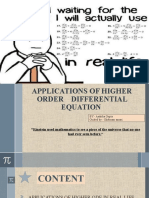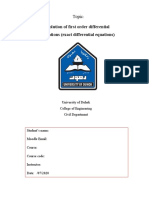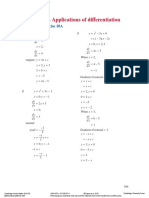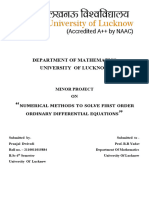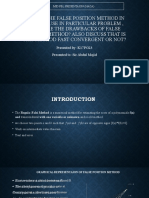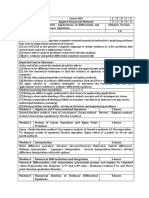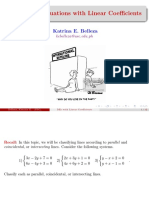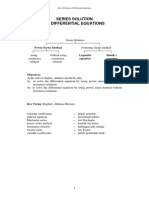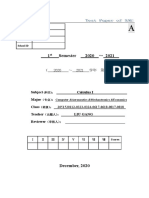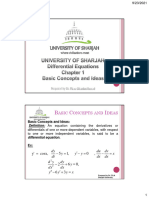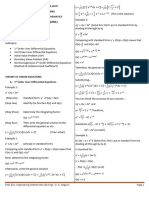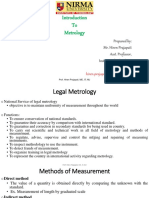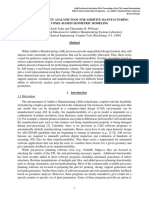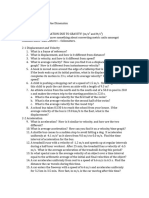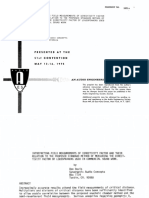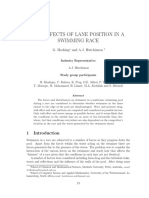0% found this document useful (0 votes)
270 views20 pagesChapter 3 - Second Order Differential Equation - PPT Note
The document summarizes methods for solving second-order differential equations. It discusses:
1) The general forms of homogeneous and non-homogeneous second-order differential equations with constant coefficients.
2) The method of undetermined coefficients to solve homogeneous second-order differential equations, which involves finding the roots of the characteristic equation and using them to determine the general solution.
3) An example problem demonstrating the solution method, finding the general solutions to three differential equations.
Uploaded by
Nad IsmailCopyright
© © All Rights Reserved
We take content rights seriously. If you suspect this is your content, claim it here.
Available Formats
Download as PDF, TXT or read online on Scribd
0% found this document useful (0 votes)
270 views20 pagesChapter 3 - Second Order Differential Equation - PPT Note
The document summarizes methods for solving second-order differential equations. It discusses:
1) The general forms of homogeneous and non-homogeneous second-order differential equations with constant coefficients.
2) The method of undetermined coefficients to solve homogeneous second-order differential equations, which involves finding the roots of the characteristic equation and using them to determine the general solution.
3) An example problem demonstrating the solution method, finding the general solutions to three differential equations.
Uploaded by
Nad IsmailCopyright
© © All Rights Reserved
We take content rights seriously. If you suspect this is your content, claim it here.
Available Formats
Download as PDF, TXT or read online on Scribd
/ 20






